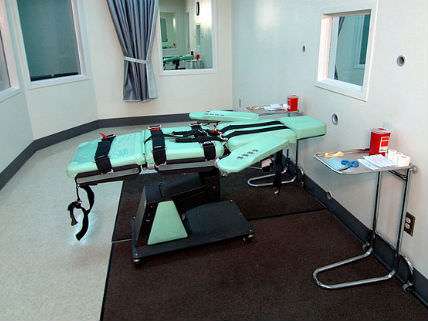Jacob Sullum on the Death Penalty

Sixteen minutes into last May's botched lethal injection at the Oklahoma State Penitentiary, the warden closed the blinds on the windows to the execution chamber and turned off the sound so that witnesses could not see Clayton Lockett writhe or hear him moan. The procedure, designed to resemble a medical treatment-albeit one with an involuntary patient and a very low probability of recovery-had begun to look uncomfortably like the cold-blooded killing of a helpless person.
Since Lockett was himself guilty of such a killing, having been convicted of shooting a 19-year-old woman during a burglary and watching as his accomplices buried her alive, many Americans would say justice was done. But as Senior Editor Jacob Sullum observes, the eagerness of death penalty advocates to address the shortcomings revealed by Lockett's drawn-out demise suggests that majority support for capital punishment depends on sanitizing the practice to conceal its true nature.


Show Comments (0)